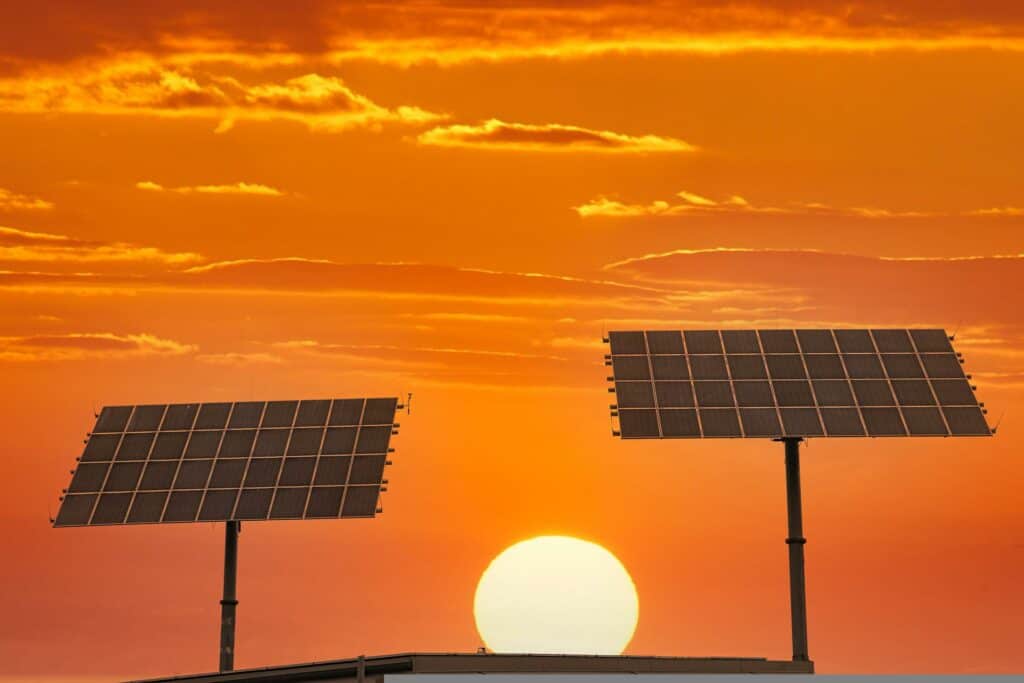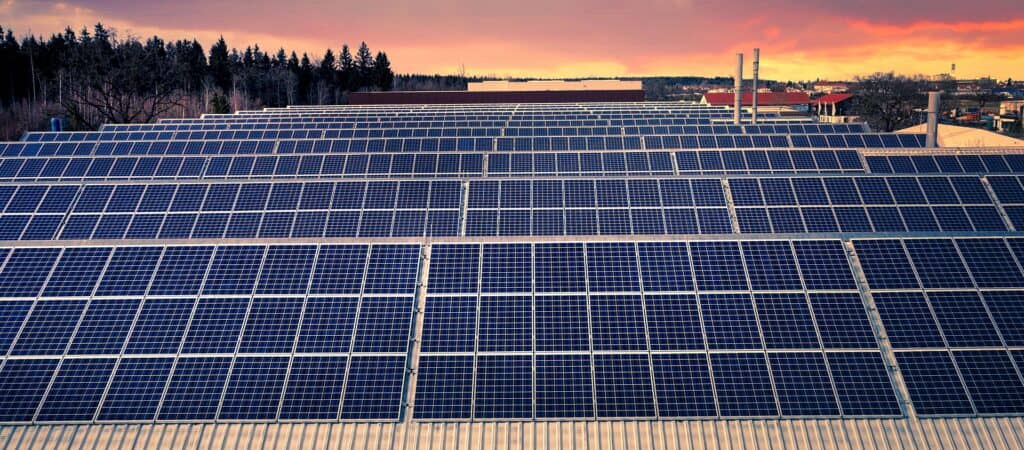Introduction To Average Income From Solar Panels
What is the average income from solar panels? In this post, we discuss the factors that come into play, and if things work out, the average income from solar panels. There are two ways to view this. First you’re getting income because solar provides for electricity and therefore you’re no longer paying an electric bill. Second, you could also get income on top because of policies designed to benefit renewable energy producers, even private individual ones.

Although solar panels have been available for a while, they have only recently become a popular means of monetization. Solar panel systems are becoming increasingly popular among homeowners and commercial establishments due to their many advantages. For example schools wire up for solar that generates savings for the district and positively benefits the salaries of teachers, budgets for students etc.
The short answer regarding average income from solar panels is that it depends highly on feed-in tariff rates. For a rate of $0.01 / kWh then a standard 20 panel home solar set up could generate $88.00 per year. At $0.10 / kWh that standard 20 panel solar set up would generate $880.00 per year.
Should You Build For Excess Solar Energy?
Generally, if you get solar panels for your home, the evaluators and designers plan a set-up such that the energy you generate from the panels equals the energy you use at home. This means you don’t have any excess energy and so you should make nothing. That in itself is a big savings because you no longer pay an electricity bill. But it turns out the details are more complicated. For example the balance isn’t always zero between production and use. You can even plan to have excess energy, either for growth or for selling.
In general, the biggest factor to consider regarding making money from solar panels is the policy of your region in treating solar power from private producers.
To put it briefly, yes, solar panels may generate income. In addition to making a significant impact on environmental sustainability, solar panels also have a decent rate of return on investment. To determine whether or not installing solar panels will be worthwhile for you, you must consider not just the upfront cost but also the ongoing maintenance costs and potential returns and the lifetime of the panels.
One of the key facts in the following post to remember about solar power is that it is transient. In the day time you generate power from your roof top solar system. At night, you need a solution to the absence of the sun: either you draw power from a storage source like a big home battery, or you draw it from the grid. Basically you need a solution for when the sun isn’t shining. The large batteries are quite expensive, almost the same cost as the solar panels. Having a battery pushes your investment break-even point further into the future.
Income-Generating Policies: Feed-In Tariff Vs Net Metering Vs Other Programs
Feed-In Tariff (FiT)
The most likely way you’ll make extra money from the grid is via a policy tool known as the “Feed-in Tariff”. It sounds mysterious. Actually it’s quite simple. It’s the amount that the utility pays you when you feed electricity into the grid, regardless of the current retail electricity rate. That’s right, the electricity of a state in the US might cost $0.14 per kWh, but the feed-in tariff policy might be above-market at $0.16 or $0.17 per kWh. It could even be less than the retail rate! A second case example is in Germany, the feed-in tariff policy could be just €0.15 per kWh compared to the retail cost at about €0.30. The reason again is because of policies. The first policy is designed to promote investment in renewable energy so we legislate an above-market price for what the home producer delivers to the grid. On the other the second policy kicks in because investments are saturated and paying below-market is a way to get electricity at low cost from private producers and pass the savings to other consumers.
Feed-In Tariffs Incentivize Private Renewable Energy Infrastructure
If the tariff is higher than retail rates, it encourages producers to sell electricity back to the grid. That increases the supply of the electricity at some cost. That cost is shared by others presumably, so there’s no free lunch as usual. If the tariff is lower than retail rates, it encourages private producers to save their energy into battery storage systems. That way the private producers are able to time-shift use of their own lower-cost energy to night time instead of purchasing it from the utility at the higher retail rate. Lower tariffs also decrease the cost of energy for everyone on the grid because of the reduced demand.
Feed-In Tariffs Are Long-Term Contracts Lasting Ten, Twenty Years
Feed-in Tariff programs are constructed as contracts that last a long time. This is to ensure that the residential energy producer has time to benefit from the program after spending a lot of upfront capital costs in setting up the solar panels in the first place. The times of contracts we’ve seen are 10 years, 20 years. Even though a Feed-in Tariff may no longer be offered, there are those who had signed up for a contract and remain under it for years to come.
Feed-In Tariffs Have Appeared In The US, Europe, Australia, Asia
While Feed-in Tariffs have been common in Europe for the last ten years, there’s less uniformity on solar policy in the United States. In fact, states do carry out these programs and sometimes don’t even call it by the Feed-in Tariff name. For example Massachusetts has a Feed-in Tariff program called SMART which is the same conditions and outcomes. California is another state with active programs.
| State/Program | Status | Feed-in Tariff Rate |
| Florida/GRU | Ended | $0.21/kWh |
| Hawaii | Ended | US$0.218/kWh |
| Maine | Ended | $0.10/kWh |
| Massachusetts, Eversource Eastern | Active | $0.05/kWh |
| California, MCE | Active | $0.06/kWh |
| Australia, Western | Active | $0.06/kWh |
First, from surveying many locations, the Feed-in Tariff was a temporary phenomenon that fell out of place in the mid to late 2010s. What most likely happened is that electricity rates became expensive, thus encumbering utilities and tax payers to continue supporting Feed-in Tariffs. As renewable capacity was added it reduced the incentive to promote renewables and thus diminished the reason for the existence of the Feed-in Tariff. Certainly as these programs shut down, renewable energy didn’t disappear and instead over time have become greater pieces of the public infrastructure.
Second, there are still isolated examples of Feed-in Tariff programs. For these places, if you’re a resident and the program hasn’t hit its caps yet, there’s a chance to lock yourself into a contract that will pay for many years. Let’s consider how much you can make.
Calculating Income Under An Active Feed-In Tariff Program
Looking at the table above, let’s consider a fairly standard home solar panel set-up of 20 solar panels. If these are very run-of-the-mill panels that average 170 watts – 350 watts, then the total power for these panels are 3.4 kW to 7.0 kW. Previously we had calculated that this type of system is able to generate 8,800 kWh per year. Let’s consider how much income you can make under different scenarios.
| Feed-in Tariff Rate | 20 solar panel annual income |
| $0.01 / kWh | $88.00 |
| $0.02 / kWh | $176.00 |
| $0.03 / kWh | $265.00 |
| $0.04 / kWh | $352.00 |
| $0.05 / kWh | $440.00 |
| $0.06 / kWh | $528.00 |
| $0.07 / kWh | $616.00 |
| $0.08 / kWh | $704.00 |
| $0.09 / kWh | $792.00 |
| $0.10 / kWh | $880.00 |
| $0.15 / kWh | $1320.00 |
You might wonder what happens if I just sell all my solar electricity? Does it mean that I have to buy electricity from the grid and therefore the income cancels the cost, perhaps all of it? The answer is possibly regionally dependent. But from what we’ve seen, the feed-in tariffs are on top of net metering benefits. So in the end you use net metering to bring electricity costs to nothing, and with Feed-in Tariffs, you’d get an additional amount over it if you send it back to the grid.
Net Metering Does Not Generate Income Usually
Net metering is a different way to account for private electricity production. In net metering, the utility company “dials back” the meter so that any use of the grid has a potential to be canceled out by a private producer who feeds electricity back into the grid. It can also be viewed as a credit on a future bill. In some places the value of the “dial back” or “future credit” is the entire cost of generation, transmission and distribution. This would be equal to the retail rate. In some places it’s a smaller set of those three costs or a fraction of that cost. But basically it’s commensurate to the retail rate. The rate can also change at peak vs non-peak hours, which is called “time-of-use” metering.
The way its usually constructed, either by dial-back or crediting of a future bill, means that you don’t make any additional income except that from the cancellation of your electricity bill.
Criticism Of Feed-In Tariffs And Net Metering
For both Feed-in Tariffs and Net metering, there has been criticism. For example in Michigan when people sell power to the grid at full retail price, i.e. are compensated for generation, transmission and distribution, they are benefiting from the infrastructure of the utility companies but don’t invest in its upkeep. They are also taking away business from the utilities, which in turn hurts the utility companies ability to upgrade infrastructure. All being said, the correct solution might be a net metering rate or a feed-in tariff rate that’s much more restricted to a portion of the price so that common infrastructure is correctly compensated.
Other Incentive Programs
There may be other programs that are less popular now. For example Delaware ran the ZREC program, where ZREC stands for “Zero-emissions Renewable Energy Credit”. Similarly Massachusetts ran the SREC program, SREC standing for “Solar Renewable Energy Credit”. These credits were not paid a fixed rate like Feed-in Tariffs, but instead behaved like stock market securities that fluctuated in price and could be bought, sold. The volatility and unpredictability meant a shift away from RECs to straightforward Feed-in Tariffs or Net metering.
The cost of solar panels has come down significantly in recent years, so using contracts like Feed-in Tariffs you can expect to see a return on your investment in as little as four years. After that time, you’ll be generating net income.
What Are The Factors That Affect Income From Solar Panels?
Several factors can affect how much income you can generate from solar panels. Here are some of the most important ones:
1. The Size Of Your Solar Panel System.
The size of a photovoltaic system is an important factor to consider when determining how much electricity it will produce and how much income it can generate. The larger the system, the more electricity it will produce. This is because larger systems have more solar panels, which can capture more sunlight and convert it into electricity.
In addition, larger systems will generate more income because they can sell their excess electricity to the grid at a higher rate. Therefore, if you are looking to generate a significant amount of income from your solar photovoltaic system, it is important to choose a system that is large enough to meet your needs.
Above we gave an example of a 20 panel system.
2. The Amount Of Sunlight Your Area Receives.
Solar panels rely on sunlight to generate electricity, so areas that get more sun are generally more advantageous for producing income from solar panels. The amount of sunlight an area receives affects the amount of electricity that can be generated, and thus the amount of money that can be made. Solar panels can still generate electricity on cloudy days, but they will produce less than on sunny days.
In addition, the angle of the sun also affects how much electricity is produced; solar panels need to be positioned so that they are perpendicular to the sun to maximize production. Therefore, when considering installing solar panels, it is important to take into account not just the amount of sunlight an area receives, but also the angle of the sun.
In general, summer months see more sunlight compared to winter.
3. Your Local Incentives And Rebates For Solar Panel Systems.
Governments and utilities offer financial incentives to reduce the overall cost of your system and increase your potential return on investment. These incentives come in different forms: one time tax rebates or credits, or feed-in tariff arrangements. They significantly offset the cost of your solar panel installation.
4. Net Metering Regulations.
Net metering is a policy that allows you to sell any excess electricity your solar panel system produces back to the grid at the same rate that you pay for grid-supplied electricity. This can significantly increase your income from solar panels by reducing your overall electric bill. This is because you can offset the cost of your monthly electricity usage with the credits you earn from selling your excess power back to the grid. In addition, net metering policies often allow you to carry over your credits from one month to the next, meaning that you can earn even more money from your solar panels in the long run.

5. The Efficiency Of Your Solar Panel System.
More efficient solar panel systems will produce more electricity per square foot, and this can translate into more income. Higher efficiency also means that you’ll need fewer panels to meet your energy needs, which can reduce installation costs and increase your ROI even further.
6. The Warranty On Your Solar Panel System.
Most reputable manufacturers offer warranties of 20 years or more on their products, so this is something to consider when choosing a system for your home or business. A longer warranty gives you peace of mind in knowing that your investment is protected in case something goes wrong with the equipment down the road.
In addition, it can also save you money on repairs or replacements if something does happen to go wrong. So when you’re considering which system to purchase, be sure to ask about the warranty and what it covers. It could end up being a deciding factor in which product you ultimately choose.
Summary
The average homeowner can save hundreds of dollars each year by installing solar panels. This can vary greatly, depending on several factors. However, there are some things that you can do to increase your chances of earning a good income from your solar panels. Be sure to consider the size of your system, the amount of sunlight your area receives, and any incentives or rebates that are available in your area.
The truth is that solar panels are a great investment, and the savings can be substantial. So if you’ve been considering going solar, now is a great time to take the plunge. Your wallet will thank you for it!

Anne Lauer
Anna Lauer is a writer, gardener, and homesteader living in rural Wisconsin. She has written for Mother Earth News, Grit, and Hobby Farms magazines. Anna is writing a new book about growing your food for free and an ultimate guide to producing food at little to no cost. When she’s not writing or gardening, Anna enjoys spending time with her husband and two young daughters.
